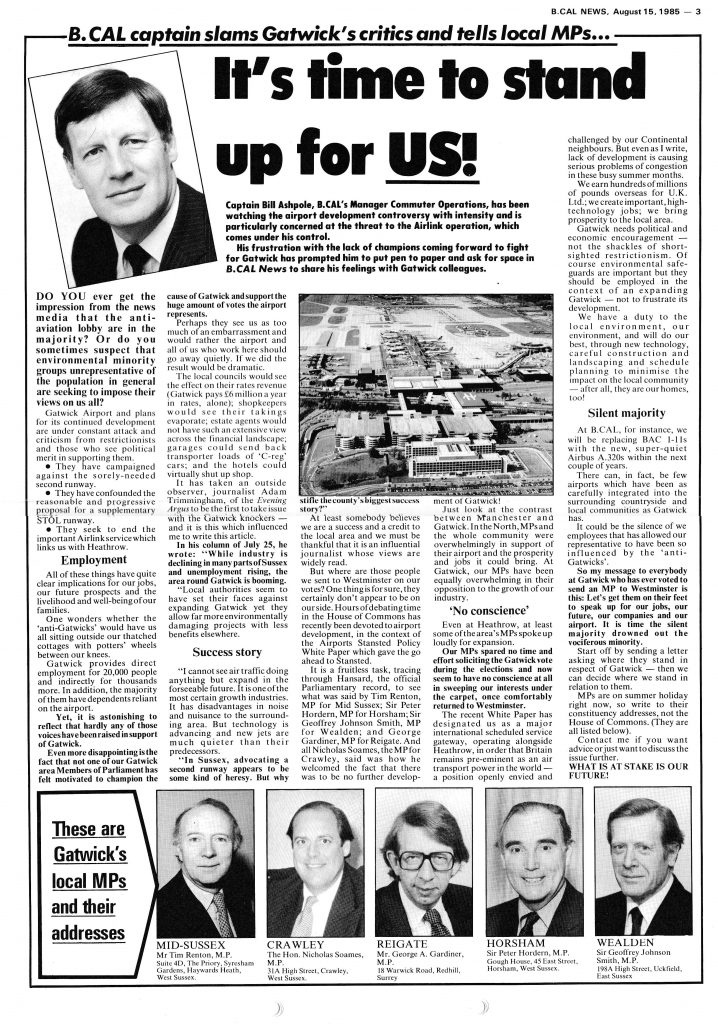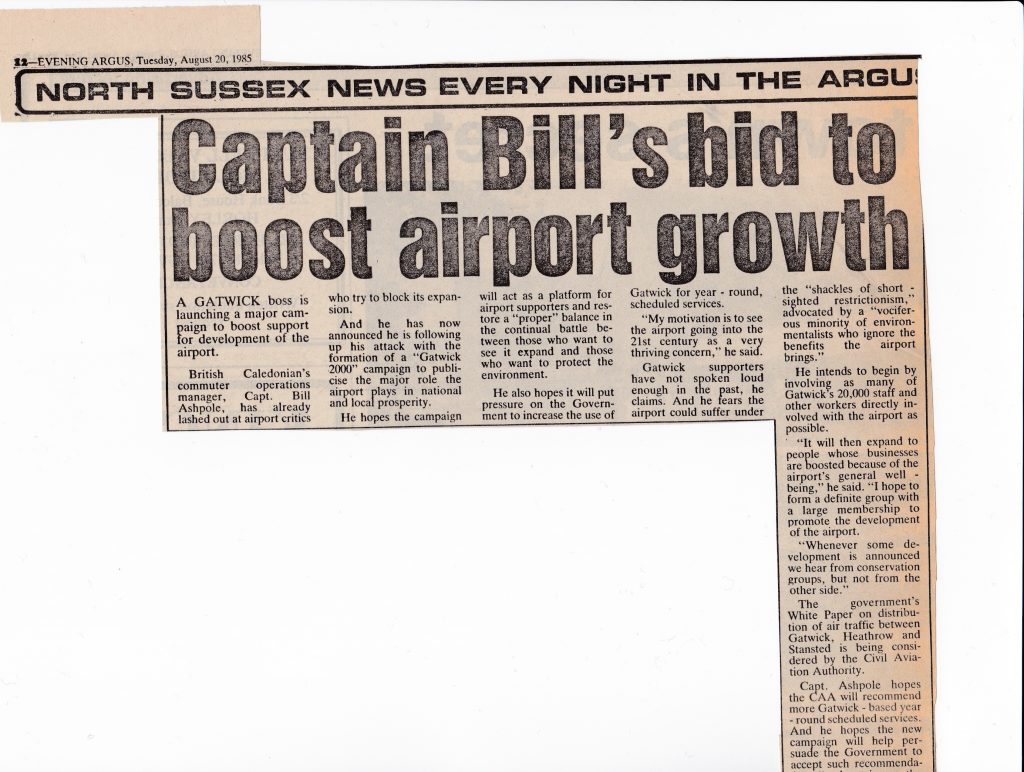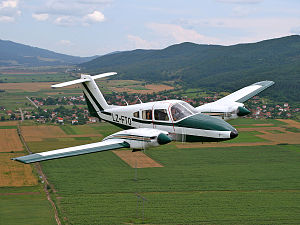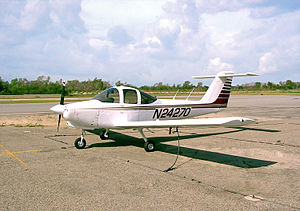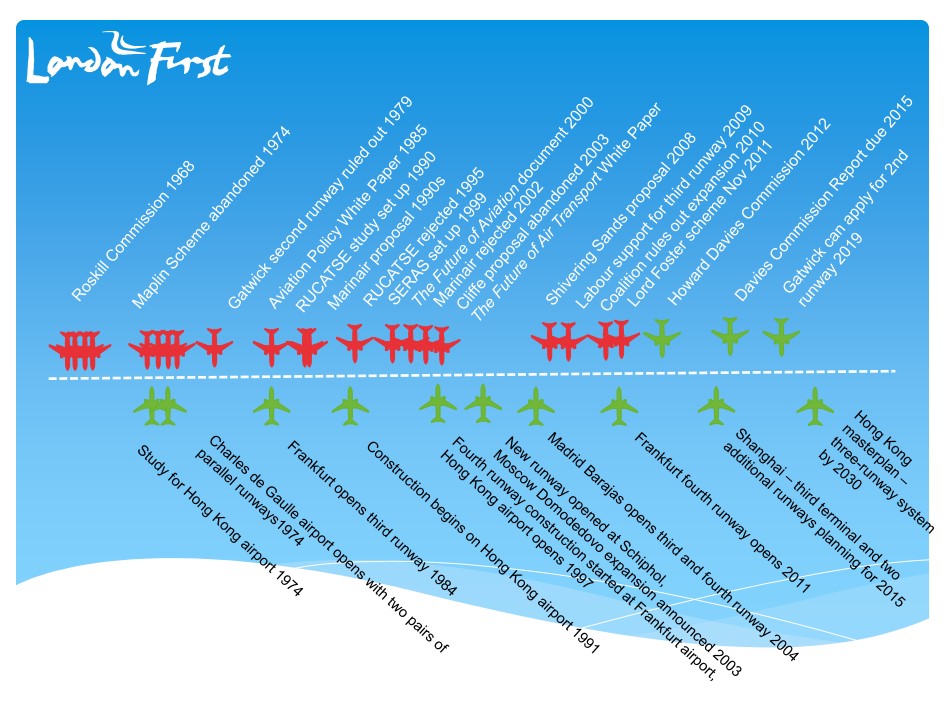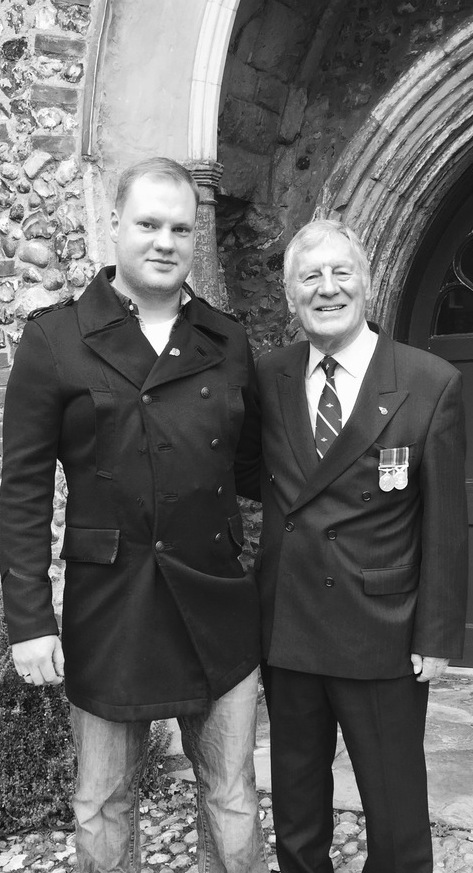Caution on copyright should you wish to use photographs and diagrams from my website. I have included attribution wherever known and attempted to seek permissions from authors/owners of copyright who could be still found. This was not possible in all cases as the source of the photo was unknown or no longer in existence.
In 1987 I was invited to join BCal Flight Operations to work in their small department concerned with Air Traffic Services. David Kemp was our General Manager and David Page my mentor in this totally new field. The function of the Air Traffic Services department could be said to be the voice of the airline when dealing with air traffic control and navigational services in the UK and throughout the World. Internationally, regular meetings took place under the auspices of IATA – the International Air Transport Association – an organisation to collectively represent the interests of the World’s international airlines. IATA had a Technical department with offices in suitable regional locations around the World, with headquarters in Montreal, Canada, where it sat convenient to ICAO – the International Civil Aviation Organisation – a UN specialized agency, established by States in 1944 to manage the administration and governance of the Convention on International Civil Aviation (Chicago Convention). ICAO works with the Convention’s Member States and industry groups to reach consensus on international civil aviation Standards and Recommended Practices (SARPs) and policies in support of a safe, efficient, secure, economically sustainable and environmentally responsible civil aviation sector. These SARPs and policies are used by ICAO Member States to ensure that their local civil aviation operations and regulations conform to global norms, which in turn permits hundreds of thousands of daily flights in aviation’s global network to operate safely and reliably in every region of the world.
The collective policy of the airlines represented by IATA was via groups such as the Regional Coordinating Group (RCG) for each of IATA’s world regions. Representatives from those airlines who could afford such a department or wished to contribute would meet to discuss and formulate policy on air traffic services. In addition, there were a number of other groups focusing on specialised areas of operation.
Review of the General Concept of Separation Panel (RGCSP)
One such was the Review of the General Concept of Separation Panel (RGCSP). This group included not just those representing the airlines but, of greater importance, also scientists and representatives from ICAO and other organisations, to discuss and promote the feasibility of reducing the standard vertical separation of flights above Flight Level 290 (around 29,000 feet). Hitherto, vertical separation of aircraft by air traffic control (ATC) throughout the World was 1,000 feet from the ground up to Flight Level 290 and 2,000 feet thereafter. This was entirely satisfactory during the piston engine and turboprop eras but with the advent of the turbojet airliner, cruising at altitudes in excess of 30,000 feet, the lack of vertical separation available to ATC was causing congestion. The RGCSP performed a very important function and we were met with success when it concluded in 1988 with the subsequent introduction in 1996 of 1,000 feet separation to replace the existing 2,000 feet over the North Atlantic, followed by other regions, resulting in a huge increase in airspace capacity and greater potential for fuel savings!
FANS – The future air navigation systems
When airline operation began it was mainly via visual flight, viz. pilots/navigators had topographical maps with the route to be flown drawn in pencil and flown in visual contact with the ground using the mark 1 eyeball. The occasional radio beacon was added to assist in navigation. Some airlines developed the science of flying by instruments, viz. using the instruments on the cockpit dashboard to determine which way was up (spatial awareness) and where one was over the ground (navigation). This permitted flying in cloud provided the cloud base and visibility at destination were sufficient to allow a descent to visual conditions for the landing. By today’s standards, the instrumentation was crude and liable to errors. As civil aviation developed more and more radio beacons were located along the main routes and air corridors/airways were established based on those routes. Growth continued with the rise in popularity of commercial flying to the point that congestion became a problem in certain parts of the airways system and also over the North Atlantic which had its own system of routes which changed day by day depending upon the movement of the jet stream but catered for the diurnal swarm of airliners – westbound during the day and eastbound during the night. The various air traffic control agencies progressively improved their systems and equipment to provide finer tolerances of, for example, radar separation, in order to squeeze more aircraft into their tubes of air. But there is a safety limit. So an idea which was originally to assist the flow of aircraft had become a victim of its own success.
FANS is a concept whereby ideally, aircraft route direct from airport of departure to airport of destination along a track of shortest distance, termed a Great Circle route. Aircraft and ATC communicate via data link. This is the ideal and having escaped the confines of the air corridor system, the congestion problem is relieved. Of course, separation is still essential but with the facility of high powered air traffic control computers, satellite navigation and datalink, safety can be assured. In my period with Air Traffic Services, FANS was a concept we talked about in the FANS working group and on one occasion David Page, who was very knowledgeable, and I made a presentation to Convex 1987 – a convention for UK air traffic controllers – on this futuristic system. Since then FANS has become a reality and is used in particular over the North Atlantic but as airlines invest in the equipment and air traffic control agencies modernise, it will spread throughout the World.
Gatwick 2000
In August 1985, influenced by the unfair and extraordinary targeting of the Gatwick/Heathrow Airlink by the aviation “knockers”, I put my name to an article to give voice to our side. The heading was “it’s time to stand up for us!” and was published in the BCal News of 15 August 1985. The message was very simple – “Was the silent majority allowing a minority of self-styled environmentalists to win the battle against airport development?” The article highlighted the tremendous economic benefits that the airport brought to the area. At the bottom of the page the five local Members of Parliament were listed with their photographs and addresses and readers were invited to challenge their respective Members on whether or not they supported the airport with its attendant benefits for employment and economics for the area. This really put the cat among the pigeons and local MP’s were outraged as were certain local “conservation” groups such as GACC (Gatwick Area Conservation Campaign). The truth was that local MP’s generally tended to fawn the “environmental” and “conservation” lobbies and give little utterance to the economic importance of the airport. The lack of any organised public representation for those who worked at the airport, their family dependants and the hundreds of thousands whose livelihoods depended on the income from airport workers, was an omission which gave the anti’s carte-blanche.
The next step was to launch a campaign of our own which I named “Gatwick 2000”. In this I was fortunate to have the support of Laurie Price (see Airlink section) and Derek. The campaign had as its slogan “for enterprise and employment” and was “designed to promote development of Gatwick and the surrounding area of Sussex and Surrey but also counter-balancing the anti-Gatwick lobby who were opposed to further development.” Within a month we had over 1,000 members, far outnumbering the total membership of GACC who had been in existence for many years. Sir Peter Masefield kindly became our patron, later to be replaced by Sir David Hunt. The local press were supportive and one lady, the late Janet Hazel, was a particular press advocate for our campaign. It was so good to see our positive comments and articles appearing in print for the local populace to read in contrast to the hitherto overwhelming anti-airport development rantings. I have always found it strange that those who work at an airport and those whose businesses and livelihoods depend on airport workers, remain silent leaving the anti-lobby to do all the talking. Crawley Town Council, whose constituency was overwhelmingly dependent upon the airport, refused to join our organisation!
There is a Northern expression “There’s nowt so queer as folk!” It seems to me that this applies particularly to some of the residents around airports. On one occasion I was invited to a local radio station just south of Crawley to appear with a local councillor who opposed Gatwick development. We sat together while listeners called in with their questions. One lady, living north of East Grinstead, made her complaint about aircraft noise and “black dust dropping from aircraft onto her garden”! I asked her how long she had lived there. The answer was six years! I then asked her whether she was aware, prior to buying her house, of the huge international airport with its one runway with its extended centre line almost in direct line of her house! It reminded me of a conversation with Tony Locke, Chief of Airside Safety and Operation of Gatwick Airport Ltd. at the time of the start of Airlink. A couple had visited his office and asked about flight paths. They were planning to purchase a house in a certain location. Tony advised them that the house in question was directly under one of the flight paths. “Oh!” they said, “but we really like this house so we will go ahead anyway with the purchase. Can you give us contact details of the local airport opposition group?” I recently watched a television “news” item wherein a man who had recently bought a house affected by aircraft noise around Gatwick, was sitting in his garden logging every flight and moaning about the airport. I once read a letter written to a major newspaper, possibly the Telegraph, in which the writer claimed that 97% of the residents living in the aviation affected area around Heathrow had moved out in the last 7 years. I submitted the corollary that 97% of local residents had moved into the area in the last 7 years knowing full well that their new property would be subject to the effects of the airport. My letter was NOT published. It seems to me totally reasonable and common sense that if one chooses to move into a house next to a motorway, or a busy railway line, or an abattoir, or an airport, then one must expect the obvious consequences. Complaining about the source of an established and completely legal activity and one which brings economic life to the whole local community is unreasonable, even absurd!
Study into increased runway capacity for Gatwick
I received a very interesting task from Alistair Pugh, then Managing Director of BCal, another of those gentlemen with whom it is a pleasure to work. This was to produce a study on increased runway capacity for Gatwick by means of integrated operations using the main runway and the so-called emergency runway. This second runway had been built in very close parallel to Gatwick’s existing runway and was commissioned to serve only as an emergency runway to be used in the event that the main runway was closed for any reason, such as maintenance. It was far too close to be used for parallel, that is simultaneous, operations. Thus Gatwick remained, to all intents and purposes, a single runway airport.
The growth in airline movements at Gatwick was putting mounting pressure on airport capacity and it was in the interests of British Caledonian Airways, as well as other airlines, to make better use of the other runway. My task was to produce a study to demonstrate the feasibility from an air traffic control point of view for using one runway dedicated to take-off only and the other for landing only.
In order to construct the modus operandi it became necessary for me to become very knowledgeable in the various criteria applied by air traffic control in the movement and separation of aircraft. In the pursuit of this, I was given extensive briefings by a very helpful local air traffic control management. The task of the individual controller was, and is, very complex and must take into account numerous factors such as vortex wake separation, typical speeds of airborne and taxiing aircraft, departure routes, etc. All known factors were built into the study and an attempt was even made to model the operation using a computer. There was a small department in British Caledonian Airways that had some information technology expertise albeit this was in the very early days of computer modelling and things were crude.
I produced the study to Alistair who had me take it to Alan Snudden, Managing Director of Monarch airlines. Then came the great day when I had to present it to the great and good of the UK airline industry including Sir Colin Marshall of British Airways and Michael Bishop of British Midland Airways. The presentation took place in CAA House. At the end of my delivery the spokesmen from National Air Traffic Services (NATS) were disparaging. They intimated that the proposal would need to work with “the precision of a sewing machine and air traffic control is not like that!” Now my experience with NATS, before and after that day had, with few exceptions been professional and rewarding. Whereas they might have been reluctant to accede to any initial request, meetings had almost always resulted in progress towards the goal. Air traffic controllers and their managers are highly professional and disciplined and seem to have an inbuilt desire to be helpful and positive. But in this case, it had become very evident that political pressure had been applied to NATS and they had been briefed to kill the proposal. Interestingly, in 2017, almost 30 years later we had the results of the Davies Commission Report to identify new runway capacity for London. One of the proposals was – guess what? A second parallel runway for Gatwick airport. Just like Airlink, Politics rules supreme!
Gatwick Airport Consultative Committee (GATCON)
This committee was set up as a forum to permit representation from a wide spectrum of parties who had an interest in Gatwick Airport and issues resulting from its operation and development. Local councils, both county and parish, local environmental and conservation groups, chambers of commerce, airlines and Gatwick Airport Limited (GAL) had representation. It was chaired, at the time, by the owner of local Neames brewery. Thanks to my activity with Gatwick 2000, when I walked into my first meeting, the hostility from the anti’s was palpable!
A major issue of the time was the intention of GAL to increase night movements. Naturally, there was much opposition to this proposal. At the key meeting leading to the vote, the chairman invited those present to address the meeting. I was the first to speak. I began with the words “I am sure that I will be a lone voice at this meeting but may I remind everyone that we have an airline, with five and a half thousand staff, in severe difficulties. We should all be concerned to ensure that this airport provides the very best conditions for preserving and enhancing its operational capability. An increase in night movements is essential……………” I then sat down. The next to speak was the representative of Horley Town Council. “You are not alone, Captain Ashpole……” He then went on to endorse my comments stressing the importance of the airport to the local economy. Other speakers then rose with similar messages. The Chairman, sensing the mood, I surmise, soon called for a vote in favour of an increase in night movements. The motion was carried! The next few minutes was pandemonium! The anti’s could not believe their ears and began shouting for a recount but the Chairman and secretariat quickly picked up their papers and left the room! I could hardly believe it and I did feel rather sorry for the two representatives from West Sussex County Council who had been given a strict mandate to vote against the motion but had, when it came to the vote, voted for it. I heard that they were subsequently disciplined by the Council. Now this decision by GATCON was not, in itself, a world changer as the Committee had no executive power. However, the decision by such a consultative body undoubtedly aided those in government who would take the ultimate decision which was to increase night movements.
The demise of British Caledonian Airways and my move to British Airways
In December 1987 the fortunes of British Caledonian Airways had reached rock bottom. British Airways, newly privatised, took over the smaller airline and its 5,300 staff spent the next few weeks wondering about their future. I was not hopeful that I would be recruited into a ground job by BA. I was wrong – British Airways offered me a post at Heathrow – the same title but heading their small team in Air Traffic Services.
As an aside, I was offered a potential job as a pilot by an acquaintance, the operations manager of a small airline operating BAC-III aircraft. His problem was pilots becoming captains but, with relatively little experience, having difficulty handling challenges occurring down route. Unsure of my future with British Airways, and wishing to increase my qualifications, I began the process of obtaining a commercial pilot’s licence (aeroplanes). My Airline Transport Pilot’s Licence (Helicopters) did not permit me to fly aeroplanes for financial reward. I spent several days at a flying school at Lydd airfield flying Seminole PA44 and Tomahawk PA38 aircraft. After 20 hours I had all the flying qualifications completed – no mean accomplishment, I thought, not having flown fixed wing for 25 years! I sat the three additional CAA ground examinations for the CPL but failed one – performance! I took it again… and again… and failed for the third time! It was as if I had hit an insurmountable wall!- weird really as I had always been good at Maths. I was now out of time to satisfy the rules of the CAA’s Licensing Department and so this whole exercise had been a waste of £3,000. It had been enjoyable though and gave me some satisfaction!
After a year I was promoted to senior management status within BA and began working for Dr Jock Lowe, a first-class guy, then General Manager Operations Control and a Concorde pilot, who went on the become Flight Operations Director of British Airways. Operations Control was located in Queens Building in the very centre of Heathrow Airport. Here things took an interesting turn when I was tasked with working in a small team of airline personnel from other airlines under the auspices of the Association of European Airlines (AEA) – a trade organisation, like IATA, but representing only European airlines. Delays due to inefficiencies in Europe’s fragmented air traffic control systems were costing the airlines a fortune and there was no solution in sight. Each country operated its own system and so we had a series of fiefdoms pursuing their own policies and agendas with only a limited display of commitment to a cohesive European wide system. For example, for aircraft to flow smoothly across the Continent, a consistent radar separation, such as 5 miles, throughout the system was needed and not the slow/fast/slow situation which existed. Although EUROCONTROL was a functioning organisation, it did not have the mandate to sort out the mess. The heads of the European airlines tasked AEA to produce a paper describing the deficiencies which existed and to propose a solution. The paper we produced did just that and recommended air traffic control in Europe be wrested from the individual states and put under one single authority. I learnt some months later from a very senior official in the European aviation services hierarchy (Chairman of the European Civil Aviation Council – ECAC) that this paper, more than any other initiative, had frightened the various agencies as they saw the threat to their individual empires. They realised that their time was up unless they produced the service required by their airline customers – a smooth and efficient European wide system of air traffic control!
A new UK upper airspace route
Another task given to me by Jock was to relieve the congestion on the airways along the spine of UK by seeking a new air route (airway) off the eastern seaboard from the Aberdeen area running south past the Firth of Forth. This involved meetings with National Air Traffic Services (NATS) who were very obliging and the new route was introduced some months later. I think it appears now in charts as P18C.
A re-organisation of National Air Traffic Services (NATS)
The airspace over the UK, like most countries, is used by commercial airlines, military aircraft and private aircraft. NATS was organised into two authorities/services – civil and military – both working in a very integrated manner to ensure adequate provision of services to their respective clients and, of course, that the control of all air traffic was conducted in a safe manner. Every other year the top management of NATS would change hands, passing between an RAF Air Vice Marshall and a civilian Director-General. The operational efficiency, and therefore the profitability of British Airways, was suffering severely from air traffic control delays and I was tasked by Jock to produce a study detailing the problem and proposing recommendations. After a series of meetings with senior managers within the airline, a study was produced and approved ready for submission to the Government under the auspices of the Monopolies and Mergers Commission. One of the proposals was that, given the importance of air traffic services, the “Buggins’ turn” of NATS top management should be abolished in favour of a full-time permanent Director-General. In due course, and with some alacrity, this was accepted and implemented by Government.
A European Planning Strategy for Air Traffic to the Year 2010
Another initiative was by IATA who engaged Stanford Research Institute (SRI), a consultancy firm in the USA, to produce a comprehensive study of air traffic control and airport capacity in Europe. This study highlighted the deficiencies faced by the airlines and also the enormous financial benefit that civil aviation brought to the Continent. After funding this report the airlines granted funding for IATA to recruit half a dozen experts taken from around the World to help the Technical Department encourage, even assist, the various agencies to put into effect the conclusions of the report.
In 1990, I was persuaded by the Head of the Technical Division of IATA to leave British Airways and take the post of Director Regional Technical Offices, London. The London office included the Regional Director for Europe, the Regional Director for North Atlantic/North America, the Regional Director for Middle East and an Airports department. In addition I was given responsibility for managing the newly recruited special team of experts to implement the SRI Report.
The regional offices operated almost autonomously but under the umbrella of the IATA Technical headquarters in Montreal. Lots of hard work was unquestionably put in by the various individuals in IATA and by the airline representatives who attended the many meetings, but much of it was inconsequential, a paperwork exercise. The individual air traffic control agencies and airport companies might well listen to the cries of the airlines and in some cases respond positively, but in general, would continue to do their own thing!
Prior to leaving IATA there was a development with Eurocontrol. It was agreed with Keith Mack, Head of Eurocontrol, that the airlines could put two individuals into the Flow Management Unit (FMU) – the department which allocated slots to all flights operating along the air routes of Europe. The importance of this department could not be overstated and it was thought that having airline representation therein would achieve greater transparency and openness for the customer. This high-level decision was, quite understandably, not greeted enthusiastically by the head of the department concerned but after a couple of meetings we were able to draw up the terms of reference and the role of my two staff who were then relocated from the London office of IATA to Eurocontrol in Brussels.
RUCATSE (Runway Capacity to Serve the South East)
A major initiative of the time was the UK Government’s decision to convene a series of meetings to make recommendations on future airport capacity in the London area. This huge committee of some forty individuals included representatives from all interested parties including airports, environmental groups and the airlines in the form of myself for IATA. It was called RUCATSE, an acronym for Runway Capacity to Serve the South East. Many options were considered and rejected in favour of selecting any one of the four existing London airports. As usual, the whole exercise was a waste of time and effort as no government would be brave enough to make the much-needed decision. The following slide, created many years later by London First, demonstrates the continual prevarication and also includes the more progressive action happening elsewhere in the World.
As the man from IATA, I was representing the World’s international airlines so could not express a partisan view on behalf of UK Ltd. However, now long retired, I can express my dismay as government after government has sabotaged the UK aviation industry, be it by giving jet engines to the Russians and the Americans at the close of World War 2, cancelling the Miles supersonic aircraft project with its all-flying tailplane to give the Americans the lead with their Bell X1 supersonic rocket powered aircraft , cancelling that incredible aircraft, the TSR2, stopping Airlink, or letting the dominance of the Heathrow and Gatwick combination as the World’s leading international passenger throughput airports be frittered away to the likes of Paris, Amsterdam and Frankfurt. Some have opined that certain of the above acts were traitorous and so they seem. When will we be able to rely on our governments to be patriotic, putting the national interest above all else? When it comes to airport development when will they wake up to the needs of the country if we are to survive the fierce competition that exists from neighbouring countries who are leaving us behind, Charles de Gaulle airport being just one such example. At the time of revising this section of my blog (2017), we finally have a government decision to develop Heathrow with its third parallel runway to the North. So we have a decision at last but we will still have to contend with a small but very vociferous number of politicians and environmental groups who will champion the temporary interest of a relatively small number of local residents over the national interest and the interest of the millions of local residents and businesses who will benefit from the expansion but whose voices will NOT be heard or represented in the media – so will it become reality and will it be too little too late?
Increasing Funchal airport capability
In 1992, the Governor of Madeira had received funding for a study into the viability of improving the capability of Funchal airport to include wide-bodies jets. He was also assured of funding from the European Union and the Portuguese Government. A task force was established under the chairmanship of Andre Turcat, the leading French Concorde test pilot, and including representatives of TAP, the Portuguese airline. I represented IATA.
Madeira is a volcanic rock sticking out of the Atlantic Ocean. It is very mountainous with no natural location for an airport. After touring the Island, we concluded that the only location possible was the site of the existing airport, perched on the side of steeply sloping ground, with some of the runway on firm ground and the rest perched on a huge concrete pier, several hundred feet in height, projecting out over the rocks and sea. In order to gain some extra length, it would be necessary to “rotate” the existing runway a few degrees and build a longer pier to accommodate the extended runway. Since that task force met, the Governor obtained the funding and the changes have been made. Funchal airport, although still a demanding place to land, with its limited runway dimensions and ofttimes fierce cross-winds, now operates with larger aircraft. Ironically, my son, Chris, who was the Gatwick base pilot manager and training captain with Monarch Airlines (but now with EasyJet), used to check out other captains to land there.
